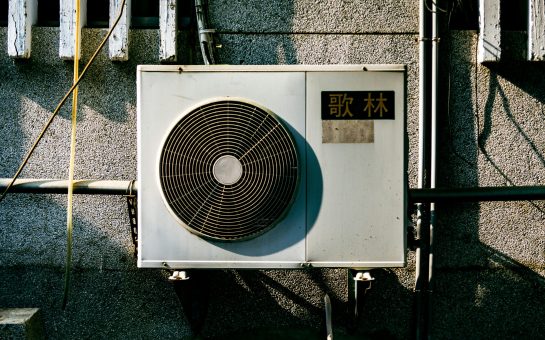Flooding along the Thames remains one of the biggest ongoing concerns for those living in lower-lying areas.
While traditional prevention methods have come a long way, the real change lately has come from tech.
Phones now buzz with alerts, sensors track water levels in real time, and more homeowners are starting to lean on digital tools that weren’t even considered a decade ago.
Why blockchain-backed tech might end up being more than just a trend
One of the more unexpected things to enter the conversation is blockchain.
It’s a word that’s become familiar because of its link to finance and cryptocurrency, but lately it’s also become part of how e-commerce systems stay secure, how logistics firms confirm deliveries, and how iGaming platforms operate globally.
In fact, the latest wave of online casinos is relying on blockchain to manage faster transactions and provably fair games, especially the newer ones like those covered in this Esports Insider new launch analysis, where this kind of back-end tech is a major selling point.
The relevance here for Thamesside isn’t the entertainment side, it’s what the same kind of infrastructure can do if a flood hits and local servers go offline.
With blockchain, there are multiple nodes across the globe, which means even if one section goes down, others keep it running.
Alerts could still be distributed, location data could be retained, and digital networks could stay active, which is key when time is tight and coordination matters.
Mobile alerts have become more precise, but they need reliable networks to back them up
The alert systems people now get directly to their smartphones are a big step up from the basic weather warnings of years past.
Whether it’s a flood risk or an emergency services notification about rising water levels near drains and embankments, the tech behind it is often invisible.
Behind each ping or vibration is a stack of cloud-based services, databases of postcode zones, and GPS-linked risk assessments.
All of this depends on stable connections, which is where backup plans are crucial.
In the case of flash flooding, it’s not unusual for masts to go down or routers to cut out.
Some of the newer pilot schemes are now building in mesh networks and satellite redundancy, but blockchain networks, even if originally designed for finance or entertainment, could offer a lightweight, decentralised solution that doesn’t depend on one local centre staying online.
These systems could help make sure that even if everything else is off, the flood alert still comes through.
Sensors and data layers are improving how early we can spot risk
Another layer of tech that’s made a difference recently is sensor networks.
These are installed in things like drains, culverts, and even in street-level infrastructure.
They measure water levels, soil moisture, and flow speeds, sending that data back in real time.
Once the data is up, machine learning models can start running comparisons and simulations to predict what might happen next.
Residents in Thamesside have started to benefit from this already.
In places where the council has been able to work with private tech providers, alerts can be sent before a street floods, not during.
That kind of warning, even if it’s only by 10 or 15 minutes, gives people time to move cars, elevate valuables, and prepare for short-term evacuation.
It also allows emergency services to direct attention to the riskiest areas instead of reacting late.
Community-led initiatives are finding ways to layer local knowledge with tech
What works in one part of Thamesside doesn’t always work in another.
That’s where resident-led initiatives have stepped in, often supported by tech grants or partnerships with universities.
These groups are gathering hyper-local data, like drainage issues on specific corners or the time it takes for water to reach a certain house once the river breaks its bank.
There are now simple apps and platforms that let this kind of knowledge become part of the wider flood response plan.
In many cases, residents themselves input data using their phones, sharing photos and timestamps when they see water rising.
Some are also using basic weather stations on rooftops to track rainfall, and this gets folded into the bigger picture.
This isn’t just a question of having better tech, it’s about tech that’s guided by local insight.
The platforms being used are often free or open-source, but they’re becoming essential because of how they help communities prepare and communicate.
Emergency response planning is moving beyond sirens and radios
The way emergency services prepare for a major flood has also changed thanks to better communication platforms.
In the past, updates would go out over the radio, loudspeakers, or through landlines.
Now there are integrated dashboards that let responders see exactly where the problem is, what assets are nearby, and where the most vulnerable residents live.
These dashboards pull in live data from various sources, traffic cameras, river sensors, even social media in some cases.
If someone posts that a road is underwater, AI tools can flag that automatically.
All of it makes the response quicker and more targeted.
Real-time mapping and drone surveys are part of the new toolkit
One of the biggest recent improvements in flood response tech has been how visual the data now is.
Rather than reading charts or lists, emergency planners can now use real-time maps that show water movement as it happens.
These maps are created using everything from drones to satellite imagery, and in some areas, they’re even layered with 3D scans from previous flooding events.
For Thamesside, this is a game-changer.
Instead of guessing where water might go, officials can now make decisions based on near-instant visuals.
If there’s a blockage somewhere, a drone can confirm it without putting anyone at risk.
Featured image: Free to use from Unsplash





